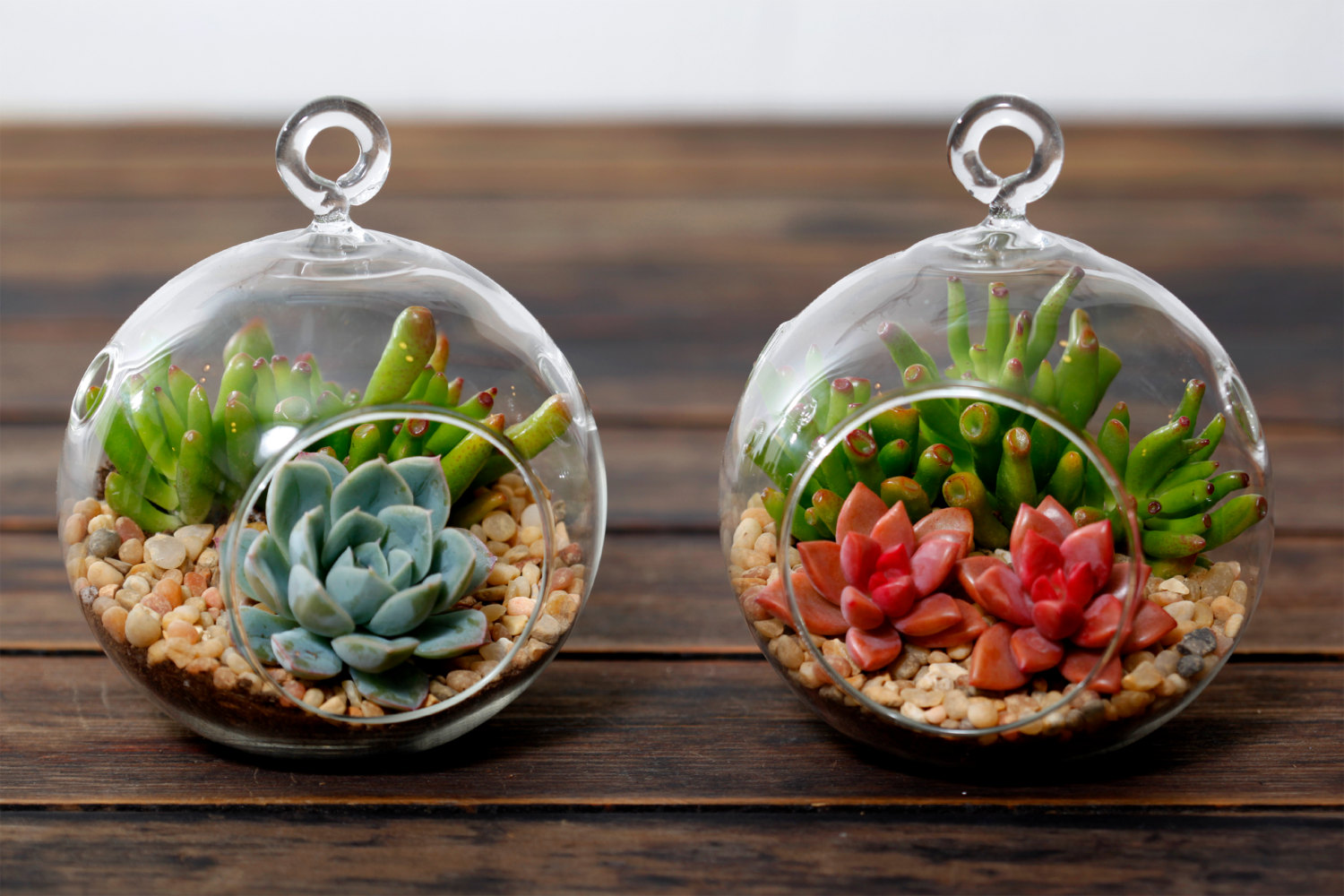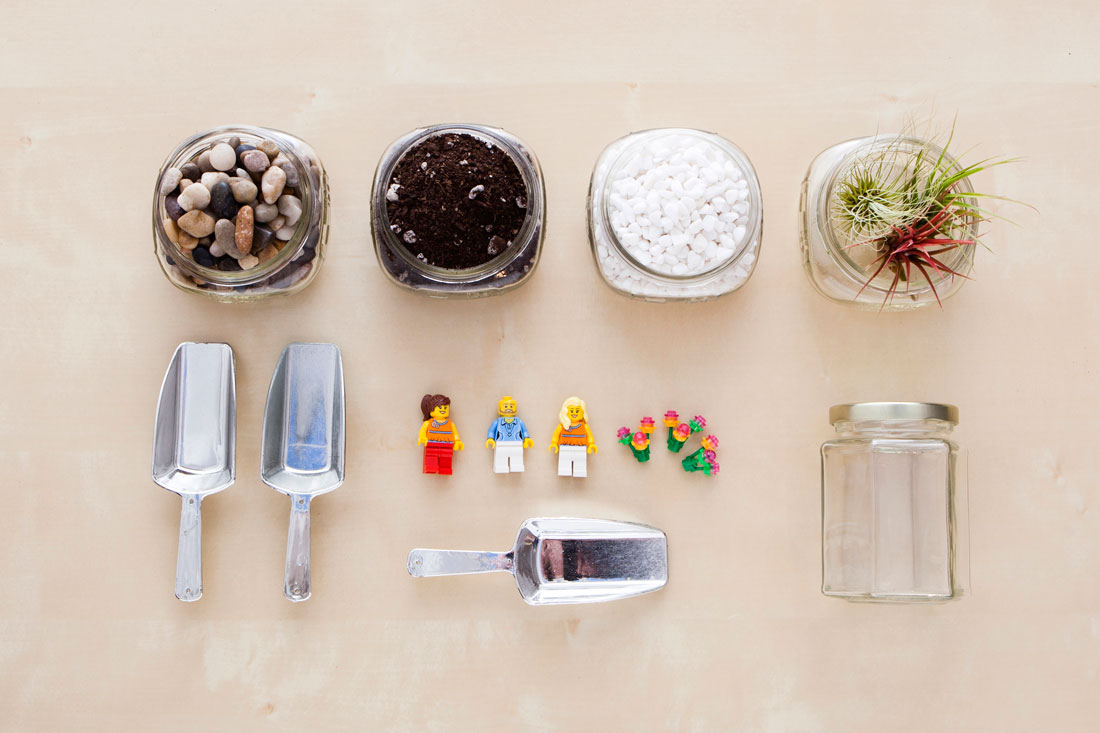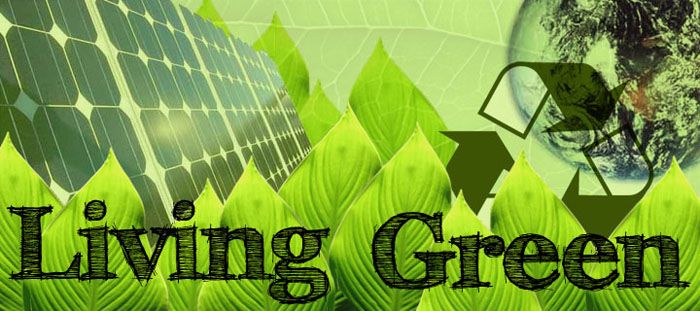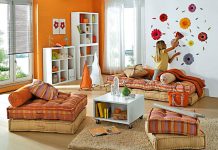
Adding something green, especially plants, will instantly liven up your room. If you think that your house is too tiny or you don’t feel like bring in the houseplant to your house, you can always put a terrarium and place it on the table in the corner of your house. You practically can place a wide variety of plants inside glass containers.
Making your own terrarium is fun and surprisingly easy, and equally easy to maintain. Whatever climate may be in your expansive home or your tiny apartment, with a healthy dose of indirect light and an occasional spray of water, a terrarium will be happy to live inside your house!
Although you can usually find gorgeous glass terrariums at any design stores, but they are usually quite pricey. If you are looking for a cheaper alternative for them, you can always make your own terrarium using materials around your house. You also can find natural stones and sands at the craft stores (or even pet supplies stores), but if you’re looking for a punch of color, consider colored aquarium gravel.
Now, before you begin, whether you choose to have an opened or closed terrarium, keep in mind that all plants should have the same environmental needs. If you want to grow sun-loving plants, an open container will work just fine. Plants that thrive in high levels of humidity should be placed in a closed container.
Picking your plants
What plants you use should be determined by what kind of habitat you’re creating: woodland or dessert.
For dessert style, you can use on-trend succulents and arid-loving cacti. Some great plants for your dessert terrarium include aloe, agave, echeveria, or rhipsalis. If you prefer woodland, you can choose forest-friendly plants like begonias, asparagus ferns, peperomias, and bella palms.
And here are the materials you need to prepare for making a terrarium:

- Clean, glass containers with large enough openings to place plants inside.
- Small stones (gravel, pebbles, broken pottery or something similar). For additional fun, you can paint these stones beforehand.
- Potting charcoal
- Sand
- Soil
- Plants
- Landscaping accessories
- Sphagnum moss (optional)
Instructions:
- Begin by placing drainage at the bottom of the container. If your terrarium will be closed with a lid, you’ll want to be sure to add a thin layer of crushed charcoal to help keep the soil fresh.
- Pour a layer of sand across the top of the rocks and charcoal.
- Add soil. Make sure you create a hole large enough for the roots of each plant. Remember that creating uneven layers of sand and soil can look great, but pay attention to the levels around the edges as this is what you will see from outside the terrarium. Steps 1-3 should equal about one-third the height of your selected container with the soil layer being the thickest.
- Remove your plant from its container and brush off the loose soil around the roots.
- Place your plants in the soil, largest to smallest, and lightly pack the soil. Do not overplant! Consider the space for other landscaping opportunities like moss, ground cover, geodes and or small figurines.
- Done!
Maintenance
Keep succulents in bright sunlight. Every two weeks or so, use a paintbrush to move sand aside at the plant’s base and slowly add moisture using a dropper. Closed wet terrariums barely need any care at all, but for ferns in open-top vessels, keep the environment humid but not wet in bright but indirect light. Mist with water only when the soil looks dry, and prune with garden shears to keep plants healthy.
Here is another cool terrarium in a recycled soda bottle




